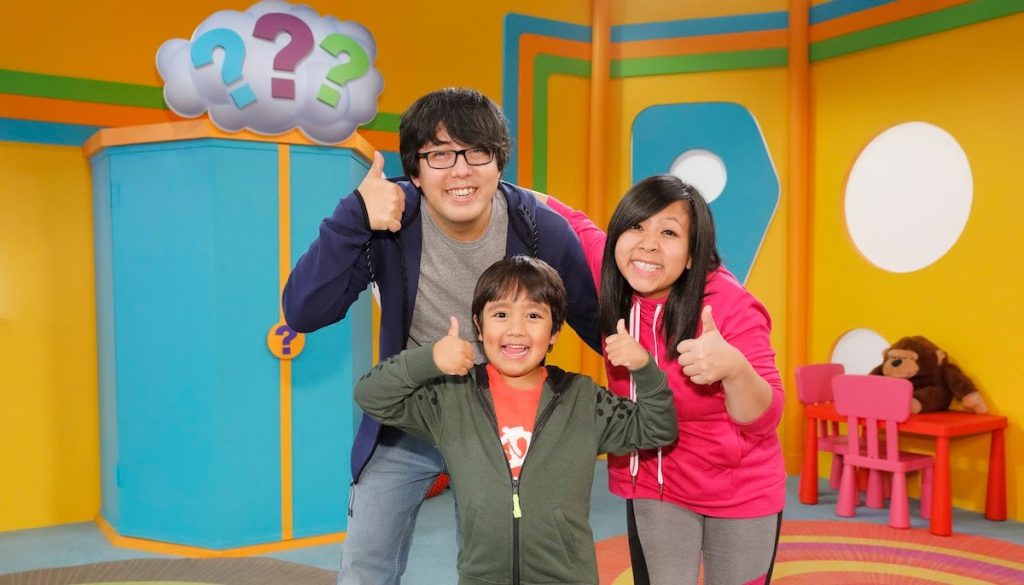
After more than 35 years of operation, TBI is closing its doors and our website will no longer be updated daily. Thank you for all of your support.
TBI Tech & Analysis: How kids control what appears on screen
Almost two-thirds of parents believe their child usually controls what’s on TV when they’re co-viewing, according to recent research from ViacomCBS. Christian Kurz, SVP of the company’s global consumer insights team, tells TBI what that means for the content appearing on our screens.
Research often tends to look back or at the present. When it comes to creating content for kids and families, understanding the role that kids play in today’s households is vital and can tell us where we are going and what that means for content creators, programmers and the television industry as a whole.
Are we there yet?
‘Today’s Parents, Tomorrow’s Kids’ is ViacomCBS’ latest global research study that takes a look at today’s families, and uncovers key learnings for today’s makers of kids and family content. With these insights, content can be composed to focus on what matters in today’s households: co-viewing, diversity and engaging audiences where they already are.
The method
Our research included a global survey of over 8,000 parents of kids aged 0-12 across 16 countries, as well as a literature review and expert interviews. Using this method to expand our reach beyond a traditional survey, we were able to garner a holistic view at the past, present and future of kids and parents.
What’s changed
Today’s kids come first in their households and the relationship between kids and parents is closer than ever before. Parents are actively involved in their kids’ lives and working hard at parenting, while also encouraging their kids to work hard in order to follow their own dreams.
Our research found that 72% of kids play a role in household decisions, which affects how they co-view content, because kids are usually the ones who get the final say on what to watch. 60% of parents said their child usually controls what’s on the TV when they’re watching it together. Parents have also become heavily integrated in all aspects of their kids’ lives, with 84% of them involved in their kids’ screen time.
This dynamic has an impact on content, as reflecting themes of parent-child closeness is key for resonating with many of today’s family audiences. While content of decades past may have represented parents as less involved or absent altogether, today’s programming features families and kids together in an increasingly prominent and positive light. Today’s content is no longer kid content – it’s family content.
Examples from our Nickelodeon slate include Ryan’s Mystery Playdate, where Ryan and his parents actively work together to solve challenges. This is just one example, but there are many in which parents share the spotlight, and this is strategically done to create co-viewing opportunities between parents and kids.
Another major change is that the word ‘parent’ has gone from a noun to a verb. Rather than being something you are, it’s become something you do. Today’s parents – both moms and dads, as well as grandparents, relatives and more – are heavily involved in all areas of kids’ lives. In fact, 55% of parents surveyed said they play with their kids more than their own parents played with them. They also strongly believe in the educational power of fun, with 88% of parents saying kids learn best through playing.
Parents of today, in all their many forms, also want children to succeed and they intentionally encourage a range of important qualities in kids. Respect, confidence, kindness, intelligence and independence were said to be the top five qualities that parents want instilled in both boys and girls
What’s stayed the same?
One of the biggest misconceptions about parenting today is that it’s so much different from the past. Fundamentally, parenting is the same but the methods are different. The things parents said they are most likely to do as their own parents were having high expectations for their child, setting firm rules and boundaries and disciplining their children.
However, the relationship with kids has changed a lot – the things that parents tell us they’re doing more of than their own parents include telling their child they love them and playing with their child. Parents are embracing more of a loving stance on parenting.
Kids today and what it means for our industry
Content creators, programmers and the TV industry should not underestimate the power of today’s kids. With the shifts in parenting, kids are valued and their opinions matter. Parents want their kids to feel empowered, so they look to them to make a range of decisions, and that includes what families watch on TV.
Aspirations of kids are continuing to grow to new heights. As an industry, we need to be intentional about including diverse voices and reaching beyond the traditional screen. There are so many more touchpoints to engage audiences, from live events and experiences to mobile and social content. Considering how audiences can engage with content on a deeper level will remain paramount.
Above all, content today is about celebrating families and the role of parents. It’s no surprise that co-viewing is on the rise, and storytellers must be inclusive of the various perspectives—from the ups and downs of family life, to fun, educational entertainment that appeals to all. Parenting is not easy, and letting that show through in content will resonate with families as a relatable reflection of our ever-changing world and the many stories to be told.
Kids come first in households today and content creators trying to connect with today’s young generation should work to ease the concerns adults have for their children, while tapping into the modern interests of today’s kids that set them apart.
Christian Kurz is SVP of global consumer insights for ViacomCBS. He is responsible for oversight of corporate and consumer research and insights for the company around the world, including thought leadership and consumer behaviour studies as well as product, content and brand-driven research projects.




